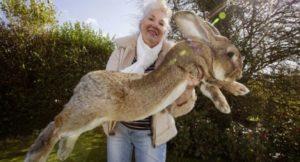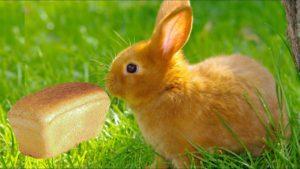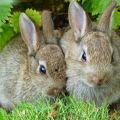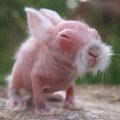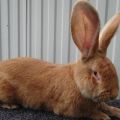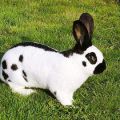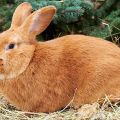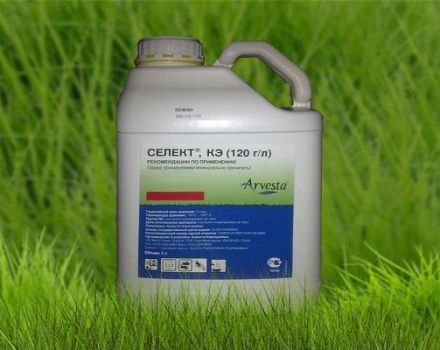Description and characteristics of rabbits of the Viennese blue breed, rules of care
Viennese blue rabbits are very popular animals. They are grown by many farmers to get delicious meat and beautiful skins. Animals are characterized by undemanding care and high fertility. They grow and develop rapidly. Moreover, rabbits have strong immunity. To maximize productivity, they need to create the right conditions.
Origin story
The breed was bred by the Austrian scientist Johann Konstantin Schultz. This took the breeder 2 years. He was engaged in crossing Flanders and Moravian rabbits. The result of the work was the beautiful crab, the Viennese blue giant, presented at the 1897 exhibition. The animal weighed over 7 kilograms.
However, further work showed that raising such large animals is not required. Therefore, the breed has been adjusted. As a result, the Viennese blue rabbit was bred.
Description and characteristics of the Viennese rabbits
Viennese rabbits are medium in size. Their body length rarely exceeds 55 centimeters. Moreover, animals have a strong body, well-developed muscles and a wide back. Females are characterized by a strongly protruding sternum.
Rabbits have a rounded head and a pubescent muzzle. All individuals have a dark blue or blue tint of the iris of the eyes. The ears are round and do not exceed 15-17 centimeters. Animals have powerful limbs of medium length. They are covered with developed gray-gray claws.
A distinctive feature of animals is the skin. She has a uniform blue-gray color. The characteristic shade of rabbits is obtained after the second molt. Newborn babies have lighter fur.
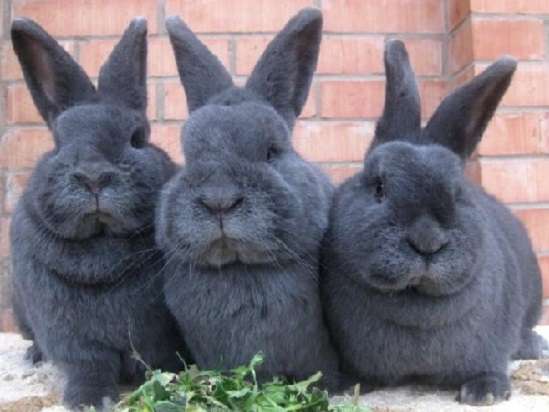
Rabbits have a large area of skin, which is suitable for dressing, therefore, they are usually classified as fur breeds. The advantage of these rabbits is considered to be their habitability with people and other animals. They are non-aggressive and calm enough. That is why rabbits can hardly endure the influence of stress.
Pros and cons of growing
The main advantages of animals include the following:
- Early maturity. With proper nutrition, rabbits develop quickly and reach the ripeness phase. It is permissible to send animals for slaughter as early as 4.5 months.
- Minimum feed costs. These animals eat relatively little. Moreover, due to early maturity, animals live for a relatively short time.
- High quality fur. Among meat breeds, these animals are distinguished by the highest quality skin. They are characterized by thick and beautiful fur.
- Unpretentious care.Representatives of this breed do not require special conditions of keeping or specific food. In addition, rabbits are characterized by strong immunity.

There are no obvious disadvantages for these animals. When breeding rabbits, there is a risk of such problems:
- the possibility of developing depression or stress;
- reciprocal aggression as a defensive reaction;
- hair graying in individuals over 4-5 years old.
The nuances of maintenance and care
The breed is considered very unpretentious. Therefore, animals can be settled in a rabbitry or a barn. It is best to make cages for them. This will make it easier to monitor your health and diet.
It is recommended to let the rabbits go for a walk for 1.5 hours every day. Otherwise, there is a risk of developing various pathologies. When creating a rabbitry, you should adhere to these rules:
- animals should not be exposed to direct sunlight;
- place plywood or wood at the bottom of the cage, and then - a bed of hay;
- control humidity parameters - they should be 60-75%;
- monitor the temperature - it should not exceed +30 degrees or be too low, since this is fraught with death;
- provide artificial lighting in winter;
- avoid exposure to drafts and sudden temperature fluctuations.

It is recommended to clean the cages once a week. It is worth disinfecting all inventory periodically. It is important to ensure that the drinkers are always filled with fresh water. In this case, the bowls should be fixed to the wall. It is recommended to clean the feeders every day. They often contain food, the spoilage of which can provoke various diseases.
With an interval of 2-3 days, it is recommended to completely change the litter to keep the room dry.
What to feed the breed
For rabbits to develop normally, they need the following foods:
- cereals;
- hay or straw;
- fresh fruits and vegetables;
- fish or meat and bone meal;
- cottage cheese, cheese and other dairy products;
- compound feed;
- vitamins and minerals.

The food intake regimen is also important. It is worth feeding the rabbits at the same time. Meals should be frequent and fractional. It is not recommended to feed animals with high-calorie foods - in particular, boiled potatoes or foods high in fiber. Such food will negatively affect the quality of the meat. There is also a risk of flatulence, which will negatively affect the health of animals.
Rabbit breeding
For breeding rabbits, it is recommended to correctly select animals that will be slaughtered, and individuals for subsequent reproduction. The choice is made in several stages:
- The first one is at the moment of jigging the rabbits from the female. This occurs on 28-60 days of life.
- The second is at 3 months.
- The third is during puberty. This moment comes at 5 months.
It is worth checking that pairs are not formed from representatives of the same litter. Otherwise, the rock degeneration will begin. To choose a parental couple, you should focus on the following criteria:
- good health;
- attractive appearance;
- lack of congenital defects;
- full development;
- developed mammary glands in rabbits.
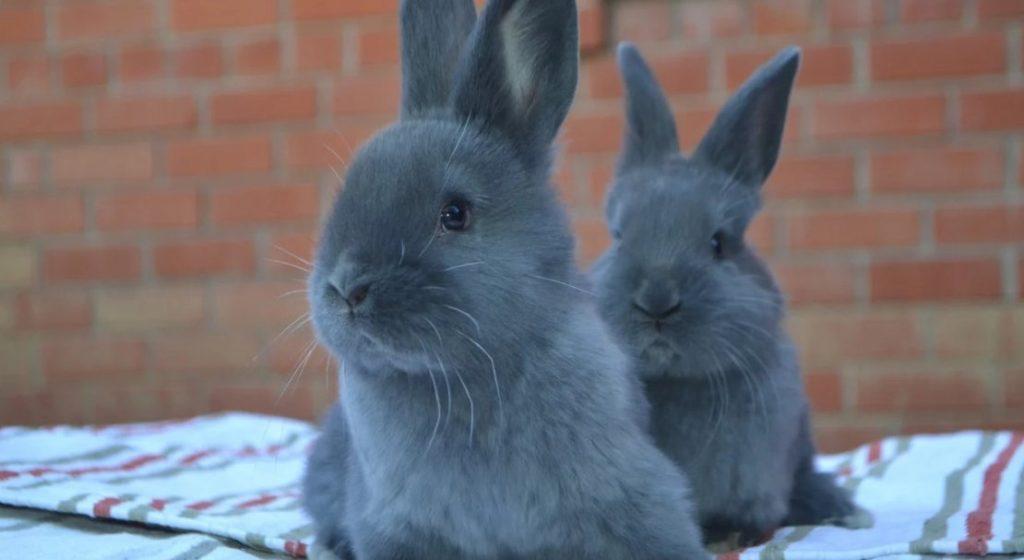
Pets over 7 months old are allowed to mate. With high parameters of mating, the couple is able to bear offspring within 5 years. If problems arise, it is worth changing partners. It takes 35 days to bear cubs, and their feeding takes a maximum of 2 months. It is allowed to separate the rabbits from the mother after 1 month. More than 5 roundabouts cannot be allowed during the year. Otherwise, the female's health will suffer greatly.
Frequent diseases and prevention
To prevent diseases and epidemics, it is worth creating optimal conditions and balanced nutrition for rabbits. Timely vaccination is of no small importance. It is important to vaccinate animals against viral infections.These include myxomatosis and hemorrhagic disease.
The first time the vaccination is done at 1.5 months, the second - at 3. Subsequently, the animals are vaccinated annually. If the rabbit lives as a pet, it is recommended to vaccinate against rabies.
How much is this breed
It will be possible to buy Viennese blue rabbits from amateur breeders, on special rabbit farms or through online stores. Delivery of animals from Europe is also possible. 1 rabbit will cost 800-2000 rubles.
Vienna blue rabbits are popular with farmers. They are characterized by rapid development and high productivity. The excellent quality of the skins makes it possible to use animals in the fur industry. In order for rabbits to stay healthy and grow quickly, they need to create suitable conditions.
